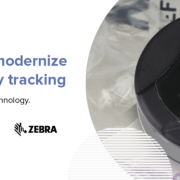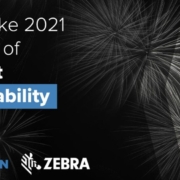RFID technology has long been at the forefront of modernized locationing systems given its ability to track in-motion products and assets. However, while still adaptable to most applications, RFID tags are not always the best option for every environment, particularly cold storage, where a combination of metal, ice, and condensation, can impact label and reader performance. With cold chain operations expected to grow by 7.24% in the coming year, supply chains must find a way to combine durability and adaptability in their tracking system. Today’s ideal cold storage tracking system should integrate:
- Minimized touchpoints – To mitigate germ spread and accelerate throughput, warehouses should minimize points of contact either through long-range scanning or wireless connectivity.
- Scalable growth opportunities – Resource shortages such as the current microchip shortage can increase demands, thus putting more strain on your devices. Consequently, deployment should be easy to accommodate changing numbers of inventory and personnel as needed.
- Durability that extends beyond the freezer – Because field teams now travel much farther than before, tracking technologies should be packed with long-lasting batteries or flexible charging options to keep workers connected during longer routes.
Zebra’s electric temperature sensors deliver it all.
Seamless temperature tracking is only half the battle. To create a competitive tracking system, sensors should be paired with enterprise-grade and freezer-ready mobile devices that withstand constant temperature swings and long-distance shipping routes. In combining mobile computers and electric sensors, modern tracking systems can:
- Certify the correct products are packed correctly for timely shipping
- Prevent early spoilage after products leave the loading dock
- Scan frozen barcodes at a distance without label repositioning
- Update receiving stores on ETAs, delays, and product condition in real time
- Facilitate audits since traceability records are all digitally available
To see how Zebra’s electric sensors interact seamlessly with your device of choice, download our fact sheet.
Whether through Bluetooth locationing or RFID technology, clear workflow visibility has become indispensable for the modern-day warehouse. Reach out to our modernization experts today to see how you can start amplifying operational visibility in your facility with technology that grows alongside your goals.




